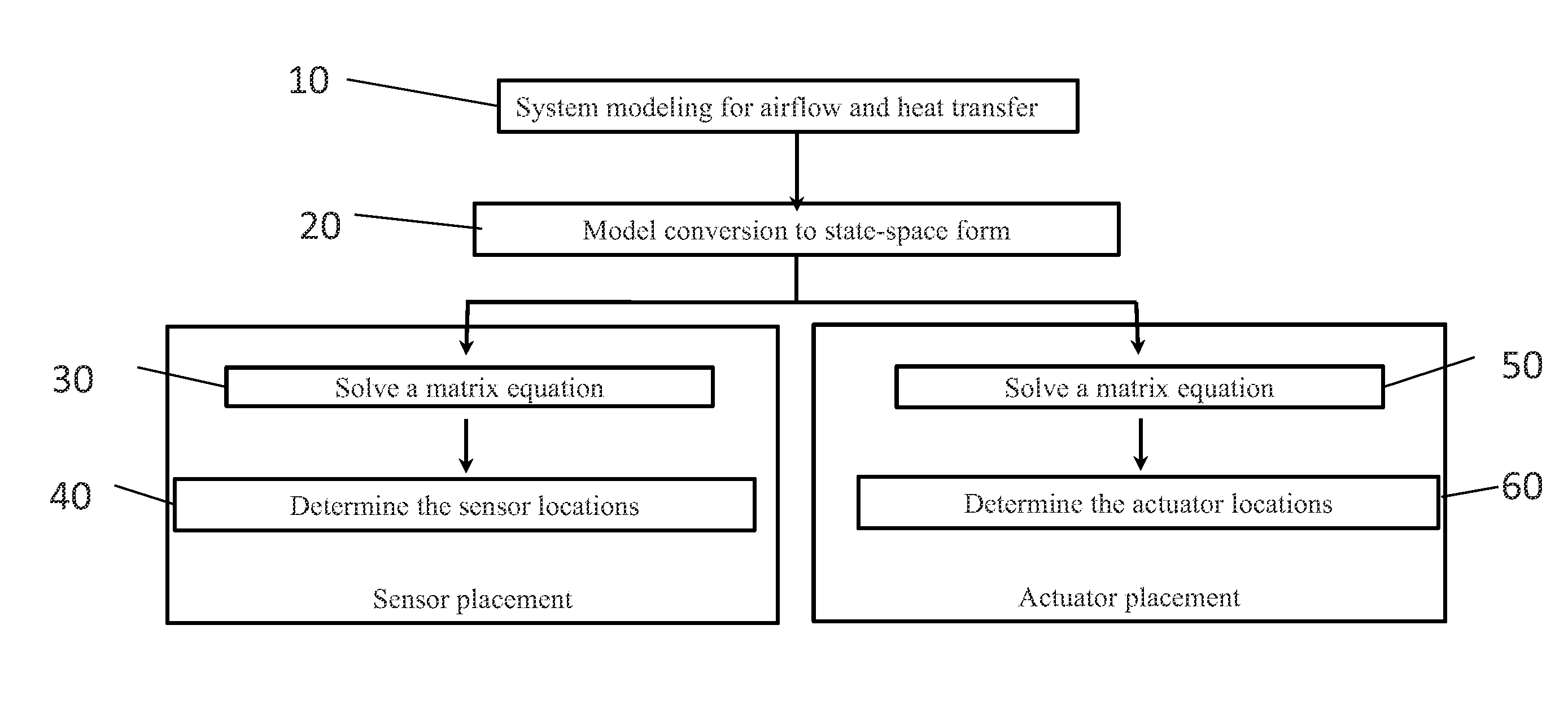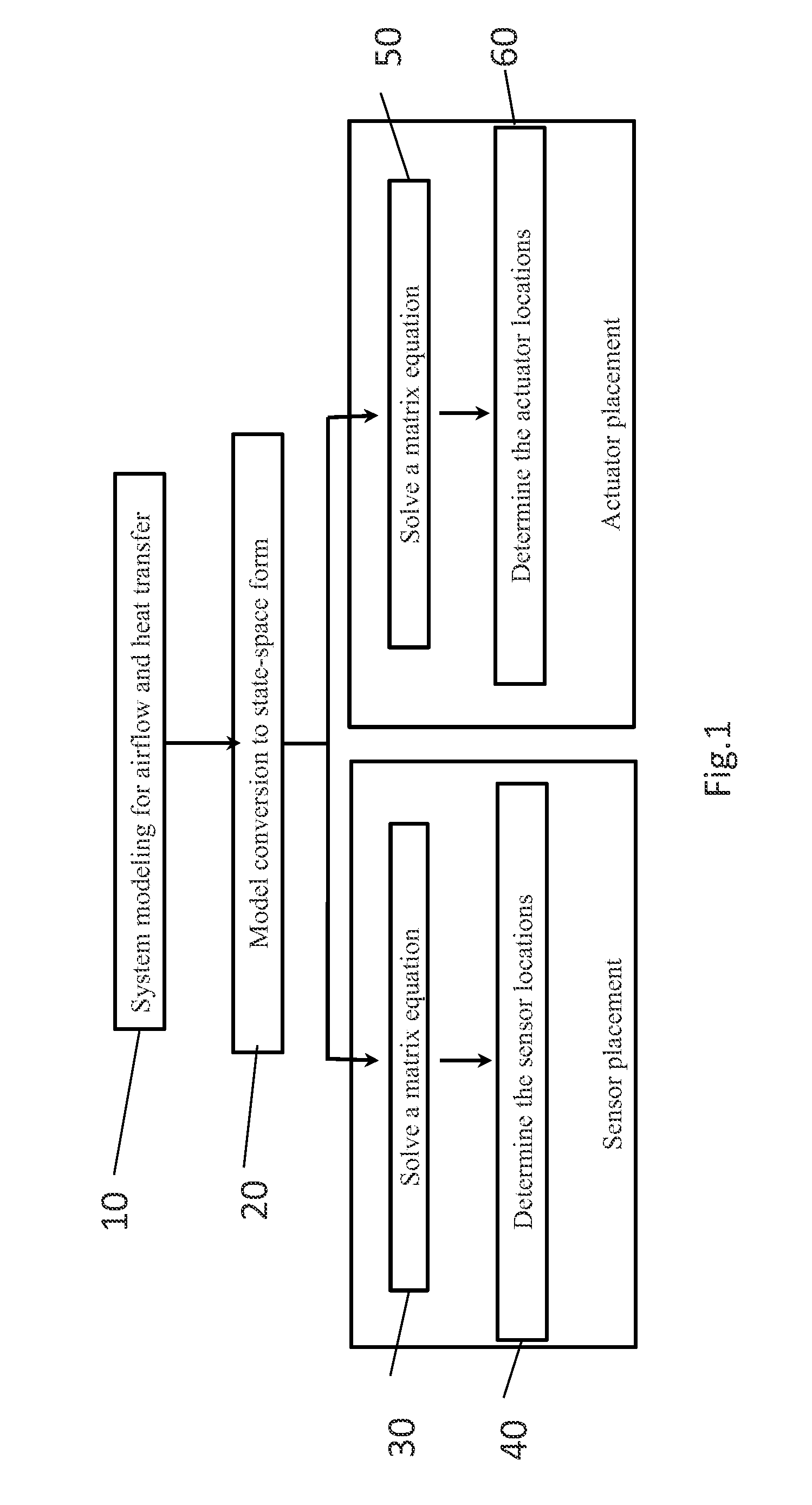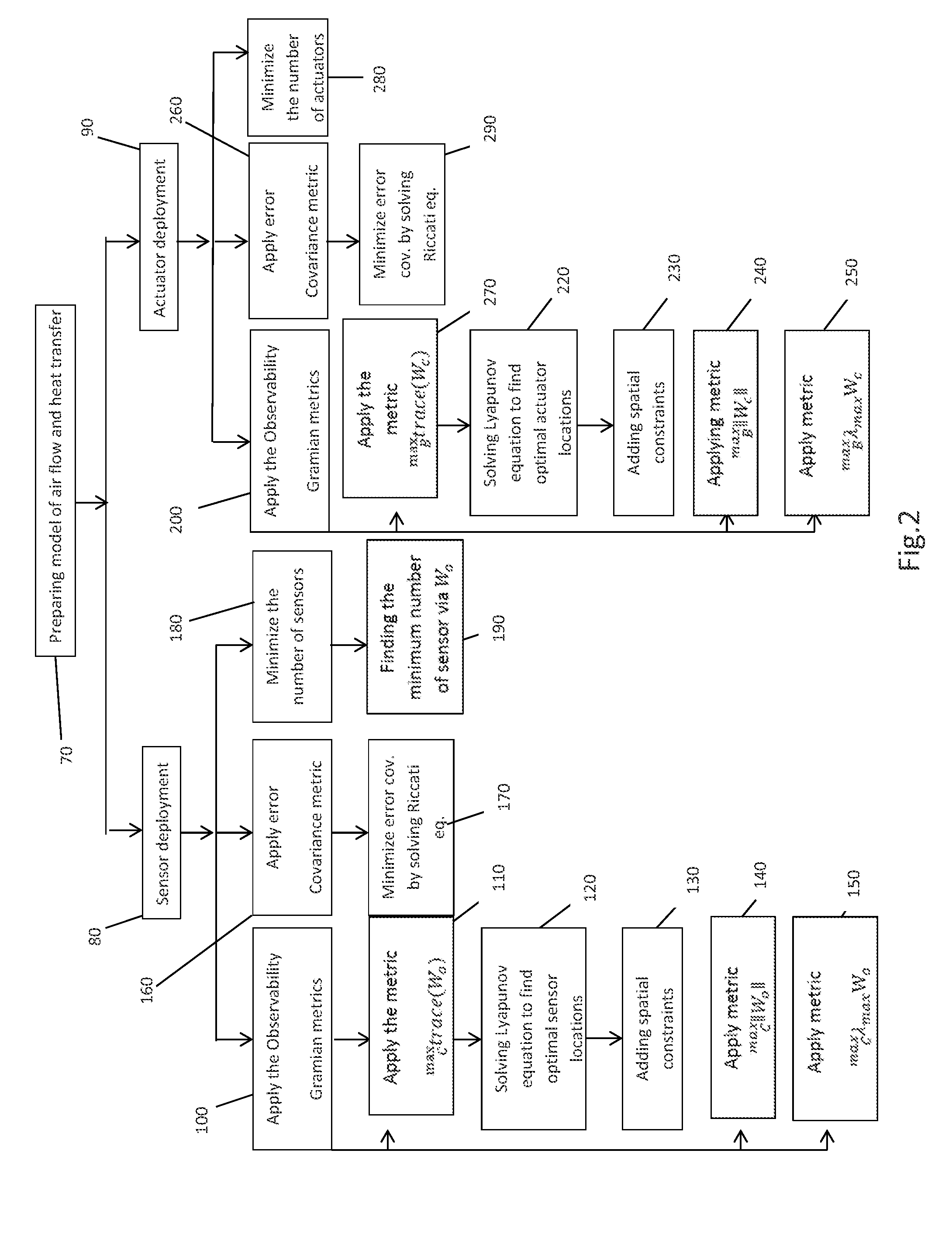Optimal sensor and actuator deployment for system design and control
a technology of optimal positioning and actuators, applied in the direction of design optimisation/simulation, instruments, computation using non-denominational number representation, etc., can solve the problems of too complicated for application to typical consumer applications, too complex theoretic complexity, and too complicated for typical consumer applications to achieve the effect of reducing the complexity of the problem
- Summary
- Abstract
- Description
- Claims
- Application Information
AI Technical Summary
Benefits of technology
Problems solved by technology
Method used
Image
Examples
Embodiment Construction
[0015]The present principles are directed to strategies for optimal placement of sensors (for temperature or climate measurements) and actuators (such as air conditioning (A / C) devices) for a given room. In some embodiments, the strategies disclosed herein optimally place sensors and actuators in a large space such that the temperature can be better monitored and regulated. The strategies can be constructed within a solid theoretical framework and have practical significance for HVAC system design with manageable computational cost.
[0016]It should be understood that embodiments described herein may be entirely hardware or may include both hardware and software elements, which includes but is not limited to firmware, resident software, microcode, etc.
[0017]Embodiments may include a computer program product accessible from a computer-usable or computer-readable medium providing program code for use by or in connection with a computer or any instruction execution system. A computer-usa...
PUM
 Login to View More
Login to View More Abstract
Description
Claims
Application Information
 Login to View More
Login to View More - R&D
- Intellectual Property
- Life Sciences
- Materials
- Tech Scout
- Unparalleled Data Quality
- Higher Quality Content
- 60% Fewer Hallucinations
Browse by: Latest US Patents, China's latest patents, Technical Efficacy Thesaurus, Application Domain, Technology Topic, Popular Technical Reports.
© 2025 PatSnap. All rights reserved.Legal|Privacy policy|Modern Slavery Act Transparency Statement|Sitemap|About US| Contact US: help@patsnap.com



